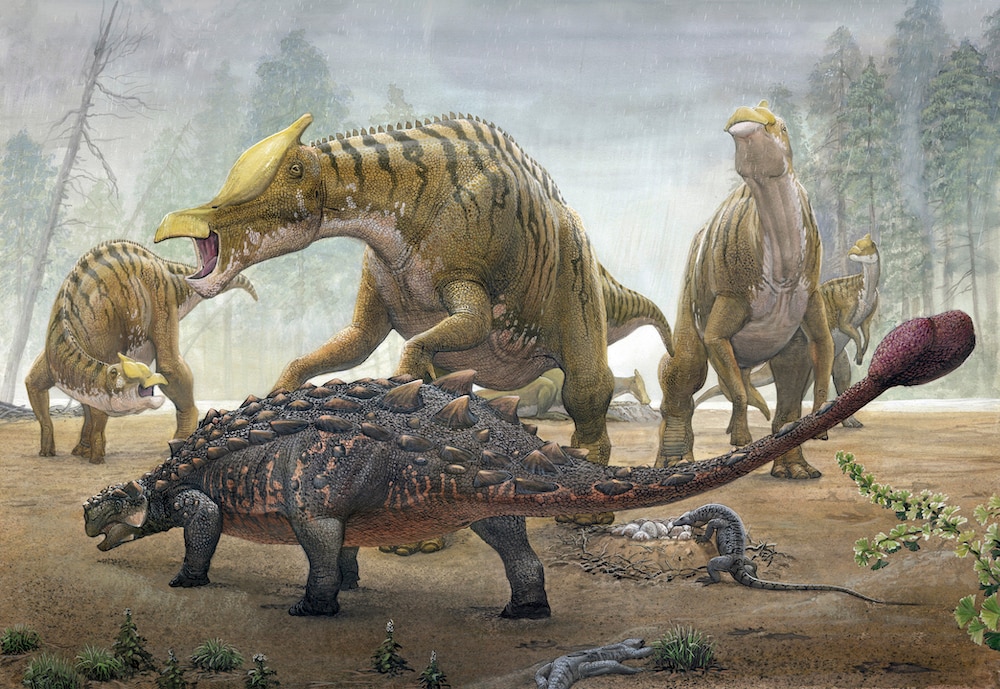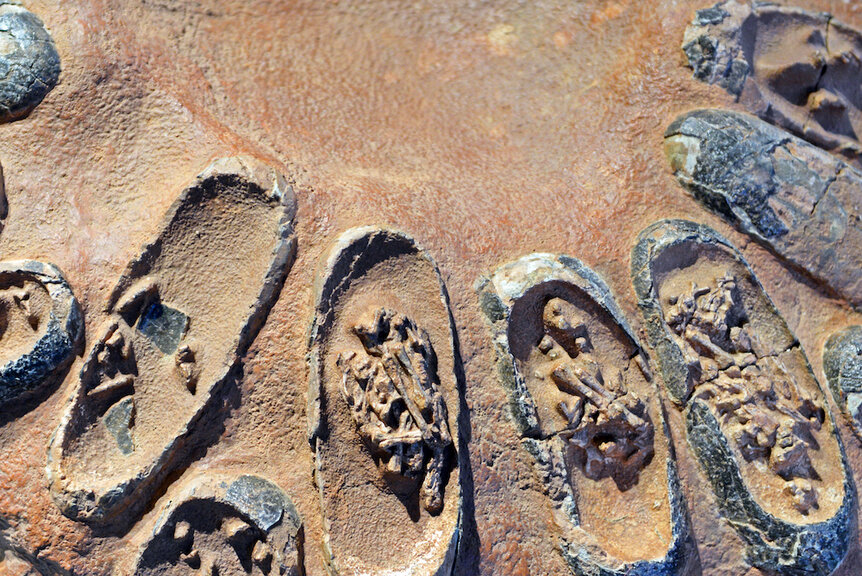Create a free profile to get unlimited access to exclusive videos, sweepstakes, and more!
Dinosaurs may have been on their way out well before the asteroid hit
They might have been doomed no matter what.

The early ‘90s were the peak of dinosaur mania. The same year Jurassic Park hit theaters audiences were also treated to an animated alternative about dinosaurs living in the modern day. Instead of genetic resurrection, We’re Back! A Dinosaur Story utilizes time travel and intelligence-raising pharmaceuticals to bring dinosaurs into the modern day. Both stories imagine how the world might have looked different if only it weren’t for a chance encounter with an asteroid 66 million years ago. In reality, however, the dinosaurs might have already been on their way out the door long before Chicxulub was a twinkle in the night sky.
Scientists from the China University of Geoscience and the Chinese Academy of Sciences set out to provide a clearer picture of dinosaur diversity in the years leading up to their extinction. Their findings, published in the Proceedings of the National Academy of Sciences, suggest that the dinosaurs’ star was fading in the last 2 million years of their reign.
RELATED: Dinosaurs might have been double tapped by not one but two asteroids
Of course, paleontology necessarily paints an incomplete picture. We are limited to what we can see in the fossil record which itself is incomplete. So, researchers gathered an impressive sample in hopes of finding trends in dinosaur diversity. Together, they examined more than a million dinosaur eggshells and eggshell fragments from a site in the Shanyang Basin, a site which is well-known for its rich deposits from the late Cretaceous.
Those eggs came from dozens of strata layers, hailing back to between 68 and 66 million years ago. Despite gathering more than a thousand eggs, the collection was comprised of only three species from two dinosaur groups. Scientists found evidence of two toothless oviraptors and one herbivorous hadrosaur. Additional bones in the area also suggest the presence of tyrannosaurs and sauropods in the area at the time.
The team then took their findings and used them to build a timeline of diversity spanning the last 2 million years of the Cretaceous. Taken altogether, the evidence in the Shanyang Basin suggests a decline in diversity over time, leading up to the Chicxulub impact. After nearly 200 million years, the reign of the dinosaurs was coming to a close and it’s almost like they saw the end coming and were curling up in a quiet place to wait out the end.
While it’s not entirely clear what might have driven the decline in diversity, some scientists believe it was at least partly due to increased volcanic activity occurring at the time. About 250,000 years prior to the asteroid impact, an area in modern-day India was heating up. The result was an enormous eruption of volcanic material in what is now known as the Deccan Traps.
Previous research estimates that the eruption began a quarter of a million years before the impact and continued until half a million years after the fact. Like previous volcanically driven extinction events, the eruption would have released incredible amounts of gas, aerosols, and ash into the atmosphere, changing the climate both locally and globally. It’s possible, that environmental strain hit many dinosaur species particularly hard, dwindling their numbers in anticipation of the knockout punch coming down the chute.
It might be impossible to put a positive spin on mass extinction but there’s some comfort in the knowledge that the asteroid knocked out animals which were due to take a bow, and not a thriving community of diverse species. Although, if there were rogue asteroids out there lobbing potshots at our planet when the biological chips are down, they might look at right now as a particularly good time. How’d that DART asteroid-punching mission go?



























